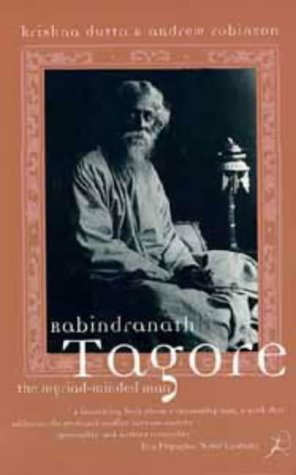What do you think?
Rate this book


493 pages, Paperback
First published February 16, 1995
[Tagore] replied [...] that he would much rather allow Shantiniketan to be 'strangled' by official mistrust than 'fettered' by official help.I bought this book at a humble library sale that I was occupying my time with while my sister, whom I was visiting at the time, was at work. It was one of those purchases that I made due to not seeing anything else of note and/or of presence on my TBR, although in terms of the acquisitions I've made with an eye on filling a gap in my knowledge, this is certainly one of the standouts. For while I was familiar with such types as Karel Čapek, Okakura Kakuzō, Mahatma Gandhi, Helen Keller, Albert Einstein, Franz Kafka, Yasunari Kawabata, Victoria Ocampo, Jawaharlal Nehru, Indira Ghandi, and so many other movers and shakers of the mid-19th to the mid-20th centuries of the international scene, it is another thing entirely to watch a figure like Rabindranath Tagore touch each and every one of them in ways that may not have always succeeded in understanding or fruitfulness, but were never insignificant in the shared intent or the cross-cultural effort. It didn't hurt that Tagore himself was inordinately perceptive when it came to the nation-building choices that would eventually coalesce into full fledged fascism, and while he was more than susceptible to prioritizing aesthetics over communication, I can't help but think about how different (and how much worse) the world would have been without him. Indeed, the worse thing about this biography is its unwillingness to present Tagore without significant subjectivity in certain key respects. Thus you get authorial admonishments of Tagore not being more sympathetic to a white Anglo biographer, a sweeping pronouncement that the "West" has become less creative in everything save film since the 1940s, and a flyaway reference to Prince Nyabongo of the Toro Kingdom in modern day West Uganda as some 'African prince' who met with Tagore. It's worth keeping the 1995 publication in mind for a few of these things, but when I look at the Tagore biographies available to the modern reader that have been published since then and find only a 2019 work numbering less than 300 pages and having less than five ratings, what else is there that an Anglo autodidact like myself can resort to? As such, I'm glad that I picked this up, as both the ideals and the flaws of its subject and its composers reflect my own to such a degree that I have smile bemusedly and take what wealth of learning I garnered in the long run. I'm far from done with Tagore when it comes to an overall appreciation, but this tome was as good a start as one who doesn't know a lick of Bangla can expect to get in the 21st century.
"Japan is the youngest disciple of Europe — she has no soul — she is all science — and she has no sentiment for other people than her own. If things ever go wrong with England everything is beautifully made ready for Japan."
-Tagore writing to his daughter Mira, Chicago, October 1916
[T]he Nobel committee of 1913 had not the foggiest notion that in far-off Bengal Tagore was a polemical critic of religious, social and political orthodoxy, and by no means friendly to Government. If they had read his Bengali essays, they would not have given him the Nobel Prize. (Today, by contrast, his prose writings would more likely have secured him the prize than his translated poetry.)